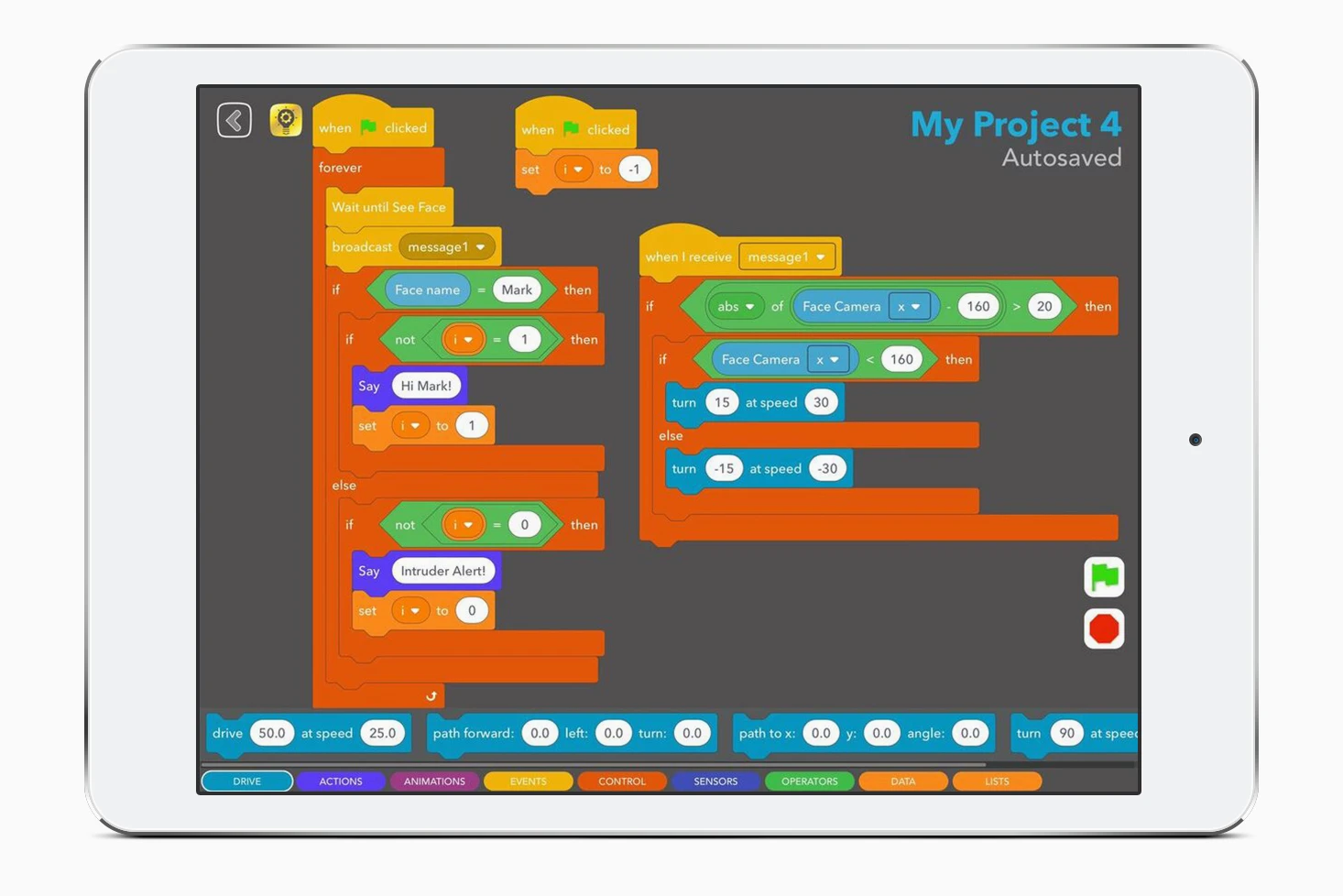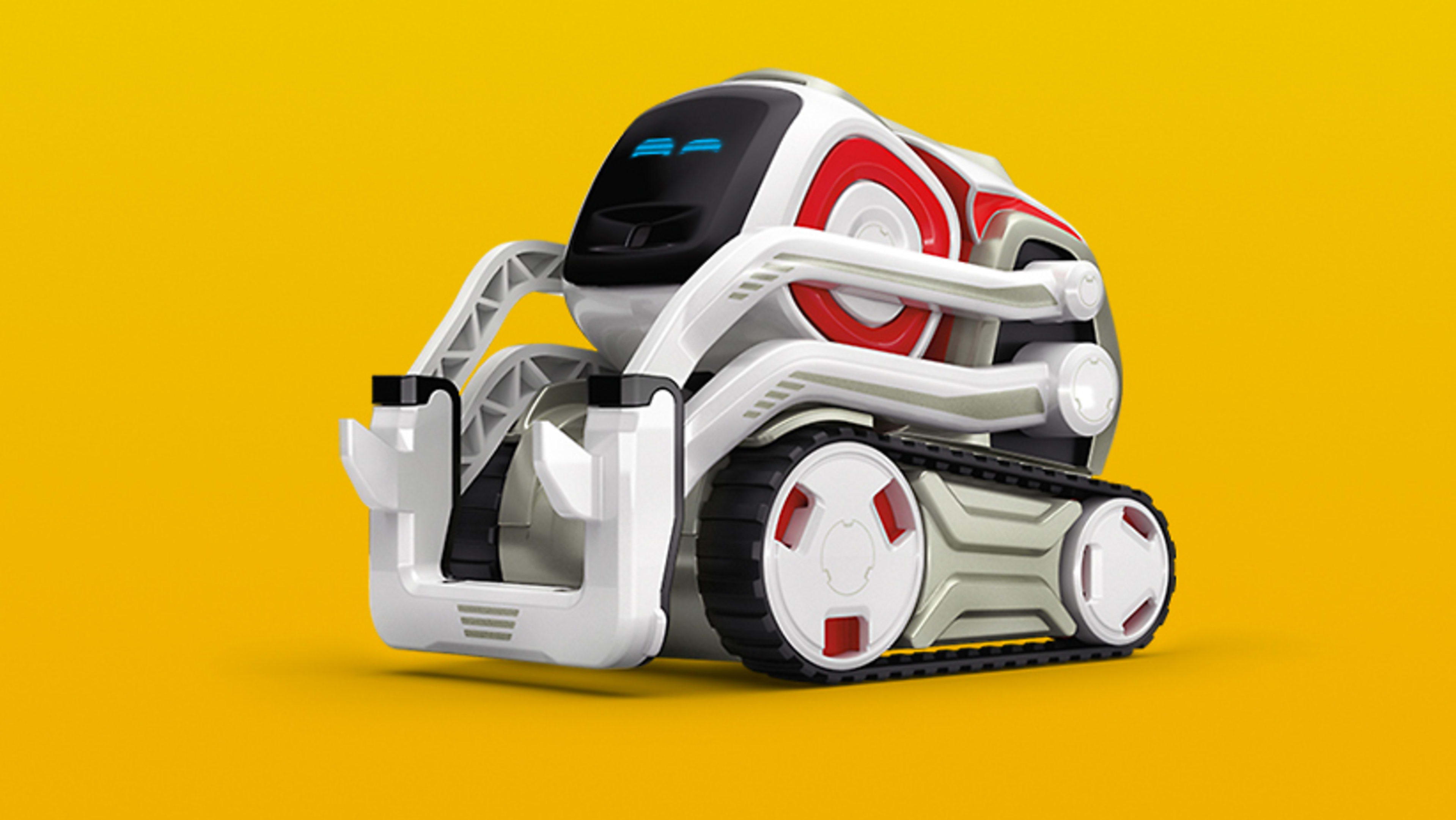What do college robotics students and grade-school kids have in common? Both can now learn programing with Anki’s $180 Cozmo robot. After releasing a programming kit in the popular Python language last year, Anki is now looking to go after kids as young as six years old with a point-and-click programming interface called Cozmo Code Lab.
The move comes about three years after toymaker Sphero launched a kid-programmable version of its $130 robotic ball called Sphero SPRK+. Cozmo is pricier but also more sophisticated. It uses a front camera to recognize individuals—and even their moods—based on facial expressions. Cozmo can show its own expressions on its 128 x 64 “facial display” screen. Each Cozmo even develops unique personality quirks. “It’s not random, but it’s based on all his previous experiences,” says Hanns Tappeiner, Anki’s cofounder and president.
Rather than come out with a separate educational product, Anki added Code Lab to the standard Cozmo smartphone and tablet control app. “We wanted to gamify it as much as possible so that it doesn’t feel intimidating,” says Tappeiner. “So we literally just put it right in between all the other games and activities in there.”

Code Lab’s interface is based on Scratch Blocks, a visual programing language developed by the MIT Media Lab that represents lines of code with drag-and-drop blocks. In a few seconds, Tappeiner programmed Cozmo to giggle and wave its little arms whenever it saw someone smile. “That’s very, very hardcore code underneath, but in here it’s just a block you drag onto the screen,” he says.
Code Lab utilizes the latest version of Scratch Blocks, which includes a new introductory mode of arranging blocks horizontally across the screen. Anki provides 32 simple challenges, like the one that Tappeiner showed me, to get kids started. “When you’re a complete beginner, it’s hard to be creative, because you’re still trying to figure out how things work,” says Tappeiner. Kids then progress to a mode of arranging blocks from the top to bottom of the screen, like real lines of code.
A later version of the app will include Scratch Block’s ability to reveal what the programs look like in real languages, such as Python and Java, to help students progress from point and click to typing out full code. College students are already programming Cozmo in introductory robotics classes at schools like Georgia Tech and Tappeiner’s alma mater, Carnegie Mellon University.

Though known for Cozmo and its Overdrive robotic toy cars, Anki has always said it plans to go much further. Sphero’s recent spin-off of a home robot company called Misty Robotics may foretell a future path for Anki; and with over $150 million in venture funding, the company has the resources to go much bigger. Aiming to provide the first bot that future engineers learn to program could be a good start toward building a robot empire.
Correction: Because of incorrect information provided by a press rep, an earlier version of this article misidentified Hans Tappeiner.
Recognize your brand’s excellence by applying to this year’s Brands That Matter Awards before the early-rate deadline, May 3.
